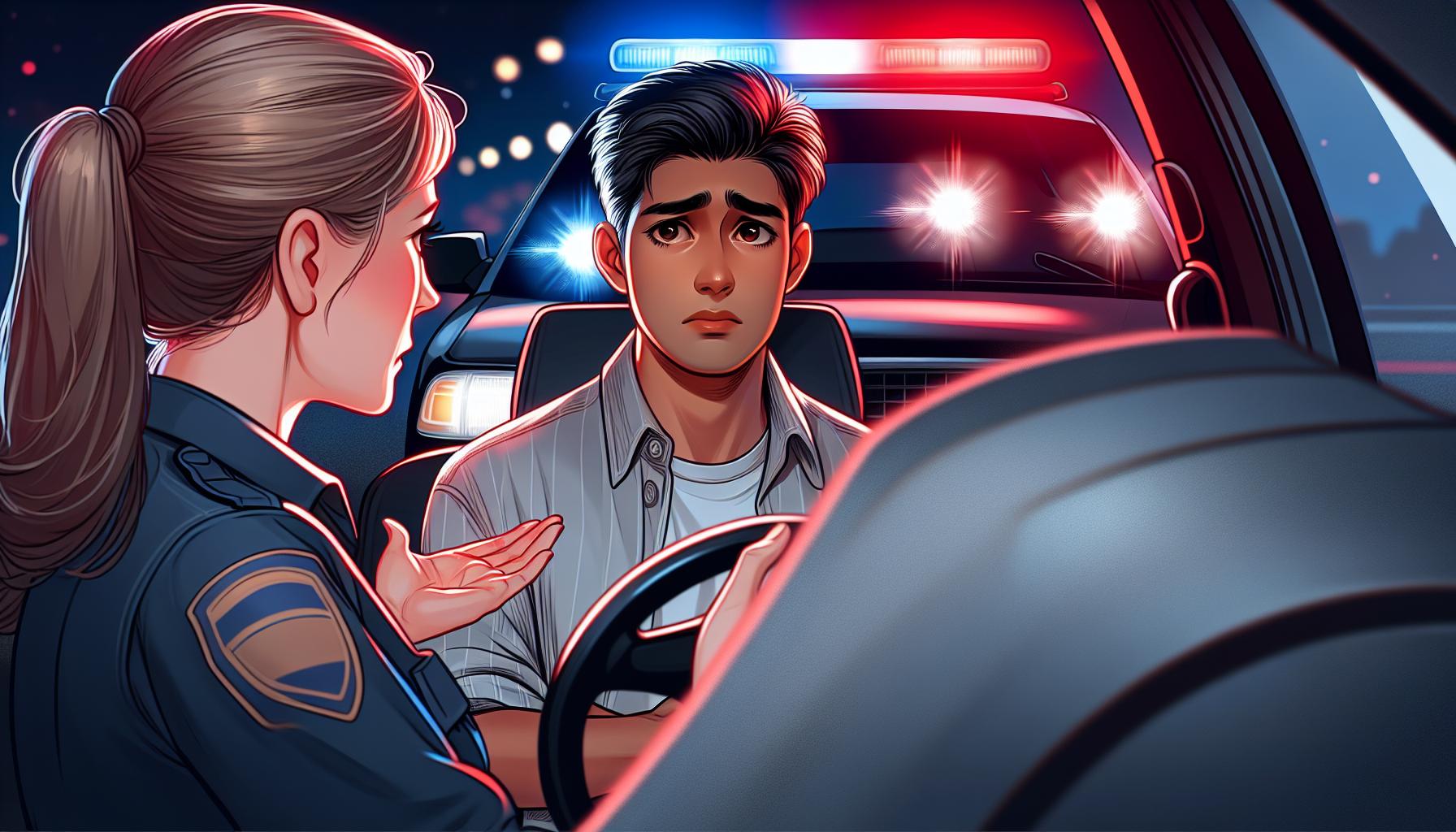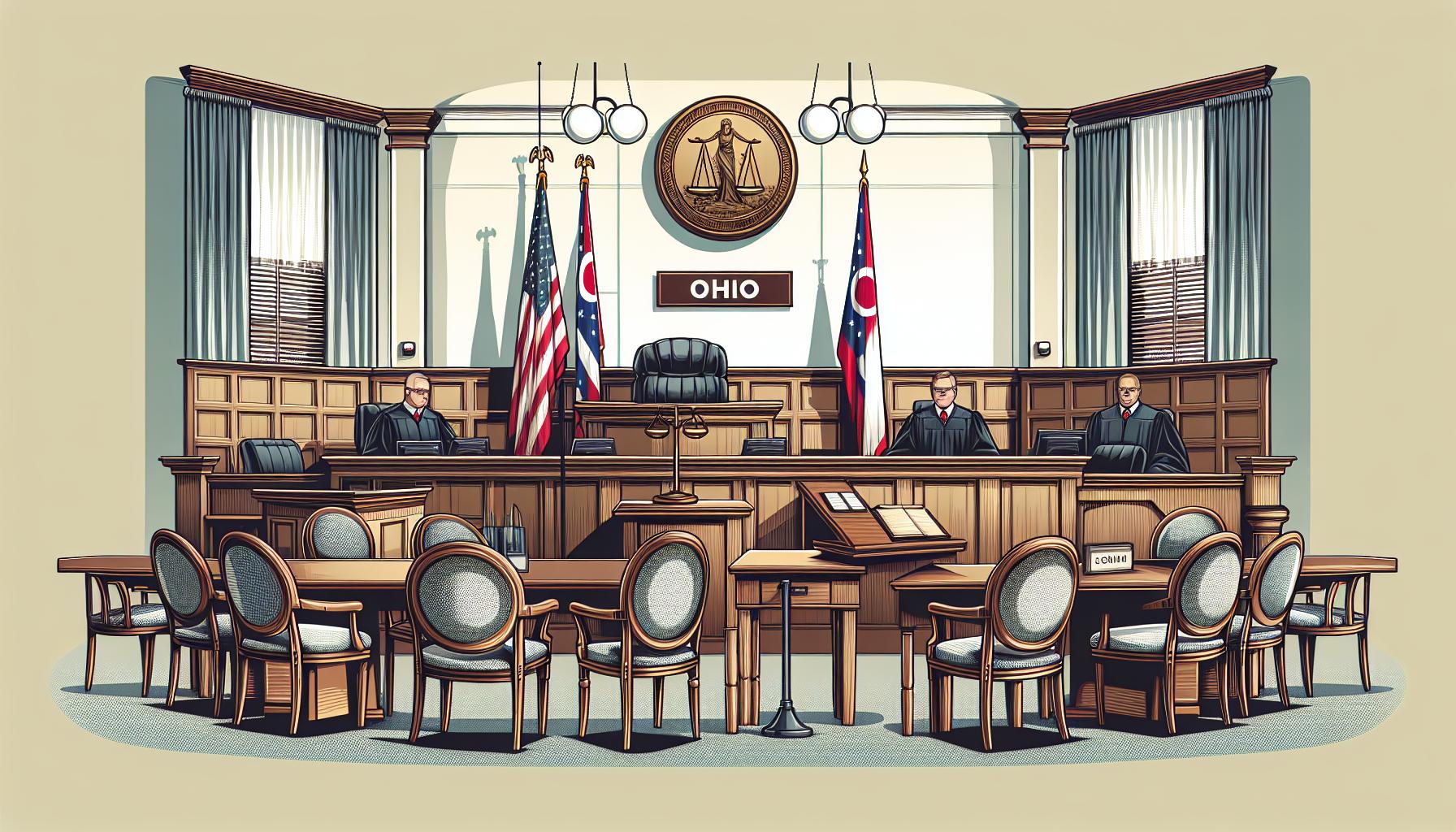Facing a fleeing and eluding charge in Ohio can be overwhelming, but understanding your options is the first step toward a strong defense. Whether you made a split-second decision or were caught in a misunderstanding, it’s crucial to know how to navigate the legal system effectively.
I’ve spent years diving into the intricacies of Ohio law, and I’ve seen firsthand how the right approach can make all the difference. In this article, I’ll guide you through essential strategies and tips to help you beat a fleeing and eluding charge, ensuring you have the knowledge to protect your rights and your future.
Understanding Fleeing and Eluding Charges in Ohio
Navigating fleeing and eluding charges in Ohio can be complex. Knowing the specifics of these charges aids in building a strong defense.
What Constitutes a Fleeing and Eluding Charge?
In Ohio, the term refers to an individual deliberately attempting to evade law enforcement. This charge often arises during traffic stops, chases, and routine police interactions. Engaging in reckless driving, speeding, or ignoring signals during these attempts enhances the severity of the situation. It’s important to understand actions leading to these charges to prepare an effective defense.
Legal Definitions and Key Terms
Reckless Operation: Driving with willful disregard for the safety of persons or property. This includes excessive speed or aggressive maneuvers.
Pursuit: An active chase where law enforcement attempts to stop a fleeing individual. Understanding pursuit protocols can highlight potential defense angles.
Signal Compliance: Obligation to follow traffic signals and stop when instructed by police. Non-compliance can escalate to more severe charges.
Evasion Intent: Proving intent to evade is crucial in these cases. Lack of evidence demonstrating willful evasion can weaken the prosecution’s case.
By grasping these definitions and terms, a defendant can better navigate the complexities of fleeing and eluding charges in Ohio.
Consequences of a Fleeing and Eluding Charge in Ohio
Facing a fleeing and eluding charge in Ohio can have significant legal repercussions. Understanding these consequences helps in preparing an effective defense strategy.
Criminal Penalties and Sentencing
A fleeing and eluding charge in Ohio is classified as a first-degree misdemeanor if no serious physical harm occurs. This can lead to up to 180 days in jail, a maximum fine of $1,000, or both. If the offense involves serious physical harm or substantial risk, it becomes a felony. A fourth-degree felony involves 6-18 months in prison and fines up to $5,000. A third-degree felony, which is more severe, can lead to 9-36 months in prison and fines up to $10,000 (ORC 2921.331).
Impact on Driving License and Criminal Record
A conviction results in mandatory license suspension for six months to three years. Accumulating multiple offenses increases the suspension period. Upon conviction, the charge remains on the criminal record, affecting employment, housing, and educational opportunities. Expungement is not possible for most felonies, making the long-term impact significant and unchangeable.
Strategic Defenses Against Fleeing and Eluding Charges

Building a strong defense against fleeing and eluding charges in Ohio necessitates a multi-faceted approach. Legal strategies can effectively challenge the prosecution’s case and potentially lead to reduced charges or an acquittal.
Challenging the Basis of the Traffic Stop
Questioning the legitimacy of the initial traffic stop can undermine the prosecution’s case. Law enforcement must have a valid reason, or probable cause, for initiating the stop. If there’s no clear justification, the evidence gathered during the stop may become inadmissible. For instance, disputing whether the officer observed a traffic violation or had reasonable suspicion of criminal activity can form the basis of this defense. The Fourth Amendment protects against unreasonable searches and seizures, reinforcing the importance of a lawful stop.
Arguing Mistake of Fact or Necessity
Asserting a mistake of fact can offer a valid defense if the accused believed they weren’t eluding law enforcement. For example, if the driver didn’t realize an officer was signaling them or mistook it for another vehicle. Similarly, the necessity defense applies when eluding was the only reasonable action to avoid imminent harm. This could be due to a medical emergency or a perceived threat from the police. Each scenario implies that the defendant’s behavior wasn’t due to criminal intent but to unavoidable circumstances or genuine mistakes.
Navigating the Legal Process

Successfully navigating the legal process requires careful planning and understanding of the system. Knowing the steps and having the right representation improves the chances of beating a fleeing and eluding charge in Ohio.
Importance of Legal Representation
Having experienced legal representation is crucial when facing a fleeing and eluding charge. An attorney knows Ohio’s traffic laws, rules of evidence, and criminal procedures. They can identify flaws in the prosecution’s case, such as improper traffic stop protocols or lack of evidence for intent to elude. With a lawyer’s help, defenses like justification or lack of intent can be effectively presented. An attorney also negotiates plea bargains, potentially reducing charges or penalties.
- Arrest and Charging: After an arrest for fleeing and eluding, the police file a report and the prosecutor decides on formal charges.
- Arraignment: The accused appears in court to hear the charges. The plea is entered at this stage—usually not guilty.
- Pre-Trial Motions: Both sides file motions. Defense might seek to suppress evidence obtained unlawfully.
- Plea Bargaining: Negotiations between defense and prosecution may lead to a plea agreement, reducing the charges.
- Trial: If no agreement is reached, the case proceeds to trial. Defense challenges the prosecution’s evidence and arguments.
- Sentencing: If convicted, the court imposes a sentence. Penalties vary based on the severity of the charge and prior offenses.
- Appeal: The defense can appeal the verdict or sentence, arguing procedural errors or misapplication of the law.
By understanding each step and working closely with legal representation, one enhances their ability to effectively counter a fleeing and eluding charge in Ohio.
Conclusion
Facing a fleeing and eluding charge in Ohio can be daunting but understanding the legal landscape and mounting a robust defense is crucial. It’s essential to challenge every aspect of the prosecution’s case from the legitimacy of the traffic stop to the intent behind your actions. Leveraging the Fourth Amendment and demonstrating a lack of criminal intent are powerful strategies. Navigating the legal process with skilled representation can make a significant difference in the outcome. Remember it’s not just about fighting the charge but also about protecting your future.
Frequently Asked Questions
What constitutes fleeing and eluding charges in Ohio?
Fleeing and eluding charges in Ohio involve the act of intentionally avoiding a police officer’s signal to stop, either by speeding away, turning off lights, or engaging in other reckless behaviors to evade capture.
What are the penalties for fleeing and eluding in Ohio?
Penalties can include fines, imprisonment, license suspension, and a permanent criminal record. The severity of the punishment depends on factors like prior offenses and whether the act endangered others.
Can I fight a fleeing and eluding charge?
Yes, you can fight the charge by challenging the legitimacy of the traffic stop, arguing a mistake of fact, or demonstrating necessity or lack of intent. Legal representation is crucial.
How does reckless operation affect fleeing and eluding charges?
Reckless operation can aggravate fleeing and eluding charges, potentially leading to harsher penalties. It involves driving in a manner that endangers people or property.
What should I know about pursuit protocols?
Pursuit protocols are guidelines for law enforcement on how to conduct chases safely. If these are violated, it may strengthen your defense, as improper procedures can be grounds for challenging the charges.
How important is it to comply with police signals?
Failing to comply with police signals to stop is a primary element in fleeing and eluding charges. Compliance is critical to avoid escalating the legal consequences.
What is the role of the Fourth Amendment in fleeing and eluding defenses?
The Fourth Amendment protects against unreasonable searches and seizures. Challenging the legality of the traffic stop under this amendment can be a strategic defense in fleeing and eluding cases.
What steps are involved in the legal process for these charges?
The legal process includes arrest, arraignment, pre-trial motions, plea bargaining, trial, sentencing, and appeal. Each step requires careful legal navigation to build an effective defense.
Why is legal representation important in these cases?
Legal representation is crucial as attorneys can expertly navigate the complexities of the legal system, challenge prosecution evidence, and develop a robust defense strategy tailored to your case.
Can fleeing and eluding charges impact my driving license?
Yes, these charges can result in the suspension or revocation of your driving license, depending on the severity of the offense and judicial rulings.